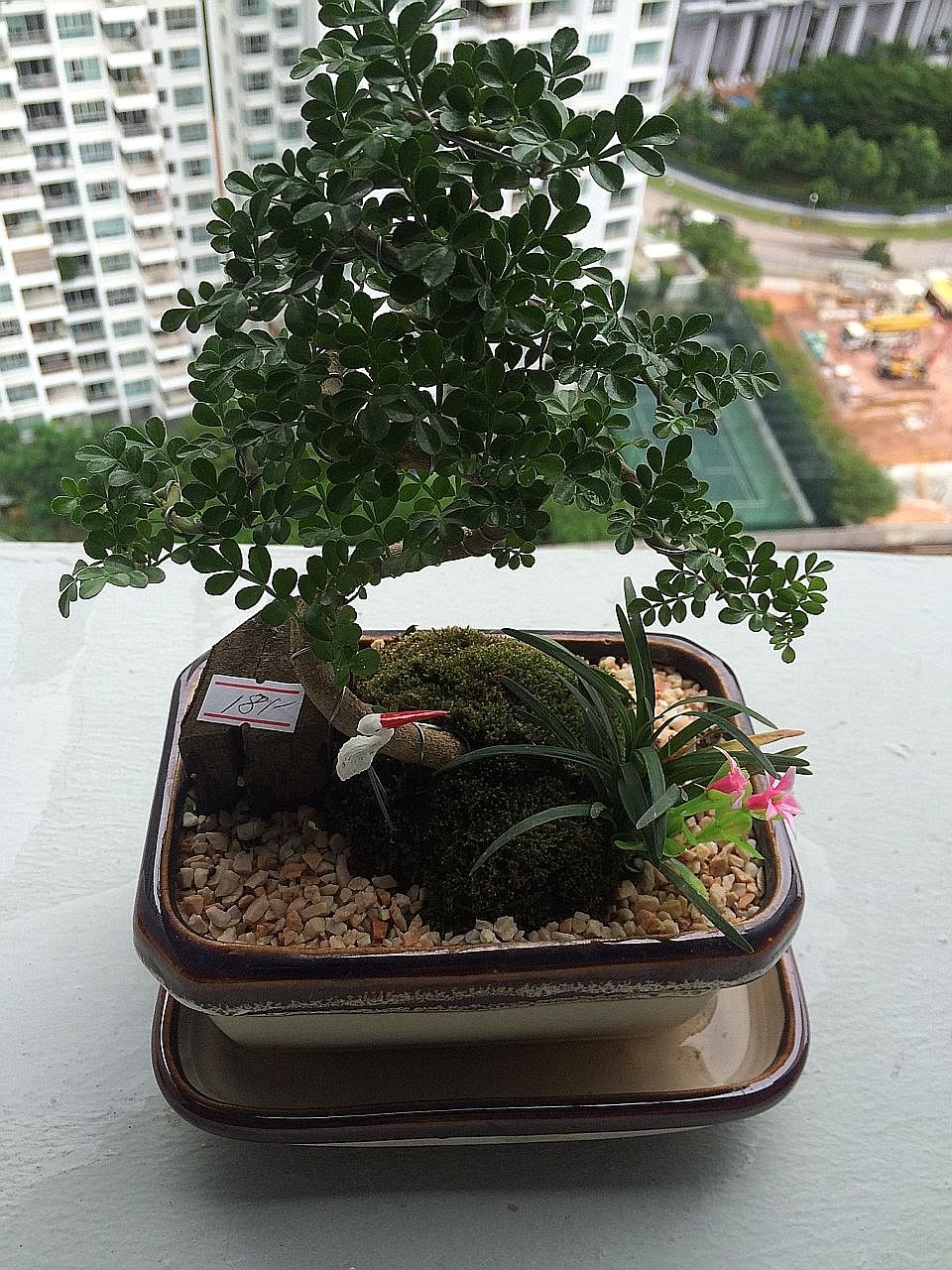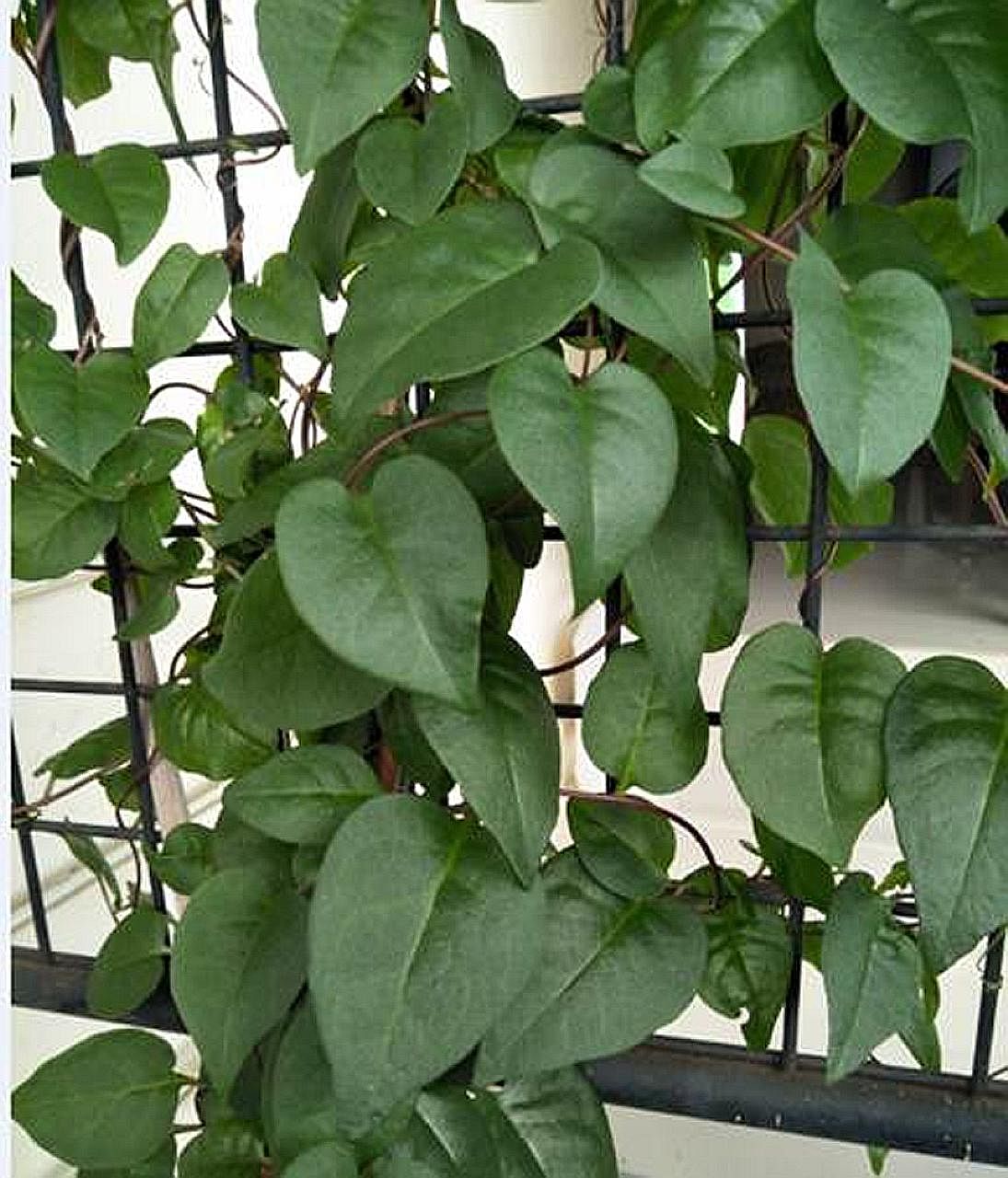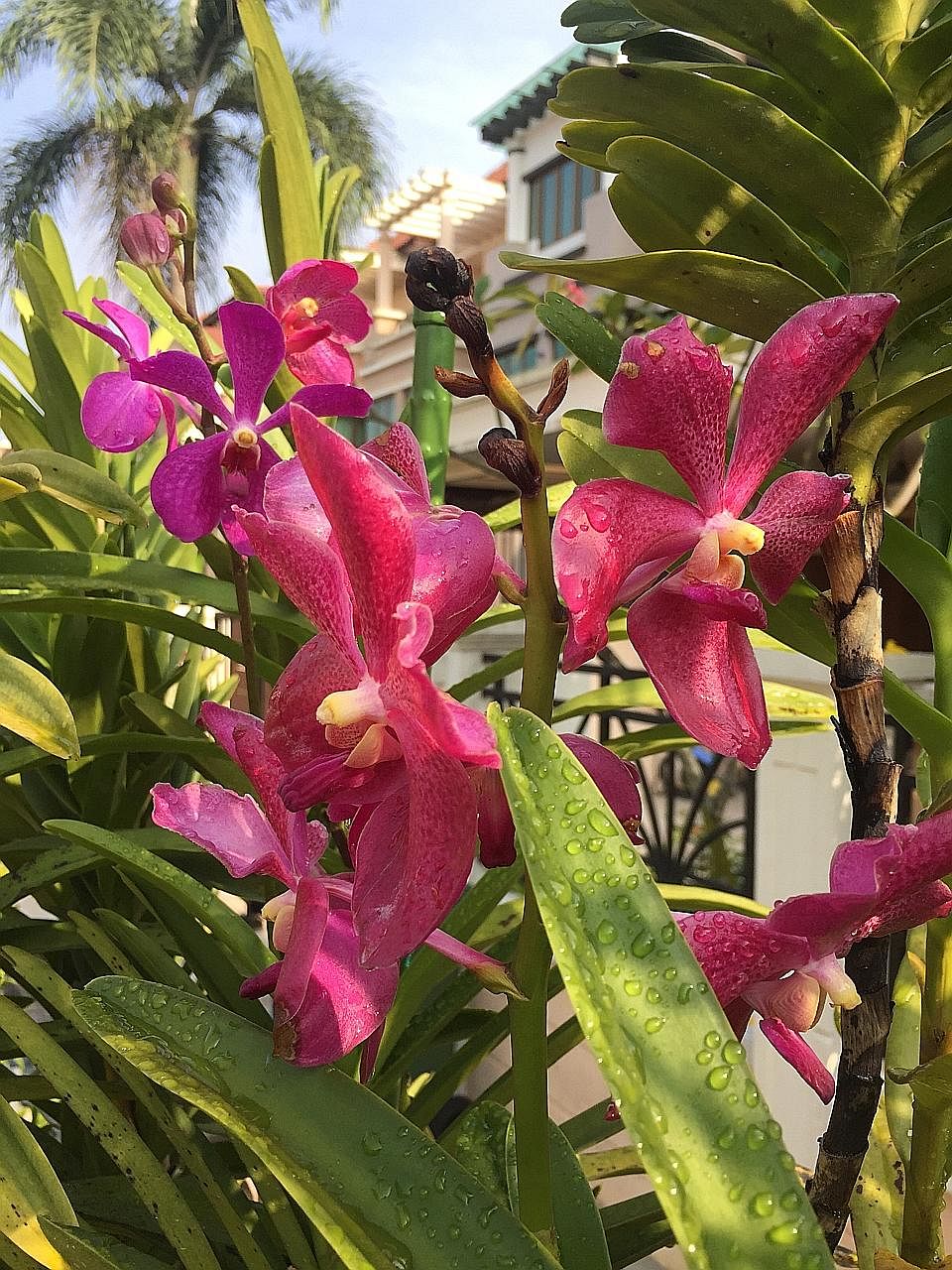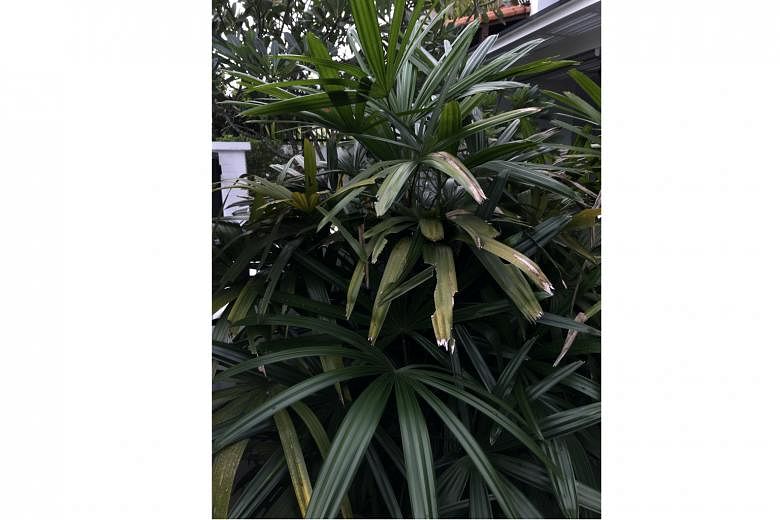Nutrient deficiency leads to brown leaves
I have a number of rhapis palms in my garden and patio. They are about 1.5m to 1.6m tall. I am curious why the leaves of this plant tend to turn brown at the tips which eventually lead to the whole stalk becoming brown. Is there any treatment to prevent this?
Don Foo
Your plant could be suffering from a deficiency in potassium. The lack of this nutrient occurs in older leaves where the yellow colour starts at the leaf tip and spreads inwards.
Dead, necrotic spots will also appear in such areas. Over time, pathogenic fungi may infect these areas.
Ensure that the soil is not too compacted, regular watering is done and the plant is not growing in waterlogged ground. These factors can affect the potassium uptake by your palm.
You may want to do a soil pH level test and ensure that the value is between six and seven for optimal potassium uptake. Without improving the value of the soil pH level, any addition of a potassium-rich fertiliser will not be of any benefit.
Also, avoid fertilising indiscriminately and excessively.
Excessive unabsorbed nutrients can cause a nutrient imbalance in the soil and this can lead to difficulties in uptake of certain nutrients by plants.
Bonsai thrives in a sunny spot

Recently, I bought this bonsai. I placed it on the windowsill where it receives morning sunlight. How do I know whether it will thrive in Singapore's weather and what is the watering regimen and fertiliser to use?
Leong Tuck-sum
From the picture, the bonsai may be trained from two plants - namely, Java Feroniella (Feroniella lucida) or the Chinese Pepper (Zanthoxylum beecheyanum). The Java Feroniella may exhibit slender and sharp thorns on its branches, but these may not be obvious on young growth. The Chinese Pepper plant has leaves that emit a distinctive spicy scent when crushed.
Both plants prefer a sunny spot with at least four hours of direct sunlight to thrive. Growing media should be kept moist at all times and well-drained. You can use a balanced water-soluble fertiliser to feed your plants - use a more diluted version to avoid burning plants and overly lush growth.
Leaves and tubers of vine edible

I have had this plant for a while. I am told that it is "tian qi" - the root portion looks like one, but it does not have the scent. Are the leaves edible?
Cath Liu
The plant is commonly known as daun binahong, madeira-vine or mignonette vine. Its botanical name is Anredera cordifolia. This plant is rather fast-growing and can become invasive. It propagates quite easily via the bulbils that are produced on the plant. It is reported to have medicinal properties. Both the leaves and the large tubers (produced underground) are edible.
Chinese Box plant needs cool climate to grow well
This will be my fifth attempt to grow Buxus sinica bonsai. My current plant is about 20cm tall and it is growing very slowly. I have had it for four years. I water it every two to three days and it gets the morning sun. During weekends, I let it get more afternoon sun. However, the tips of the leaves turned yellow and brown spots are seen at the edges. The plant seems unhealthy. What should I do?
Dominic Sew
The Chinese Box plant (Buxus sinica) has a natural distribution in China, Korea and Japan. It prefers a cooler, temperate climate to thrive. Hence it will be a challenge to grow this plant well in the lowland, humid tropics. It will exhibit very poor vigour and is likely to suffer from heat stress and be prone to various pests and diseases here.
As such, it is better to select woody plant species that are more suited for Singapore's tropical climate. You can approach the Singapore Penjing and Stone Appreciation Society for advice on bonsai growing.
Orchid buds turn black

I plant various types of orchids. For quite some time, I have noticed that my orchid blooms tend to have buds that dry up (usually blackened) at the end of the flower stalks. I tried various pesticides and fungicides with only minimal improvement. How can I resolve this?
Neo Say Hian
Symptoms such as spots on flowers and the inflorescence tip die-back could be due to a fungal disease that has infected the floral parts. This is prevalent during the rainy season.
Prune infected parts to reduce the spread of the disease. Consider protecting plants with a clear shelter that allows sunlight through but keeps excessive rain out. Also, improve air circulation around the plants.
You can try applying a chemical preventative fungicide such as captan or benlate, which are commonly available in local nurseries. Follow the product's label instructions for the dosage and frequency of application.
• Answers by Dr Wilson Wong, a certified practising horticulturist and founder of Green Culture Singapore (www.greenculturesg.com). He is also an NParks-certified park manager.
• Have a gardening query? E-mail it with clear, high-resolution pictures of at least 1MB, if any, and your full name to stlife@sph.com.sg

